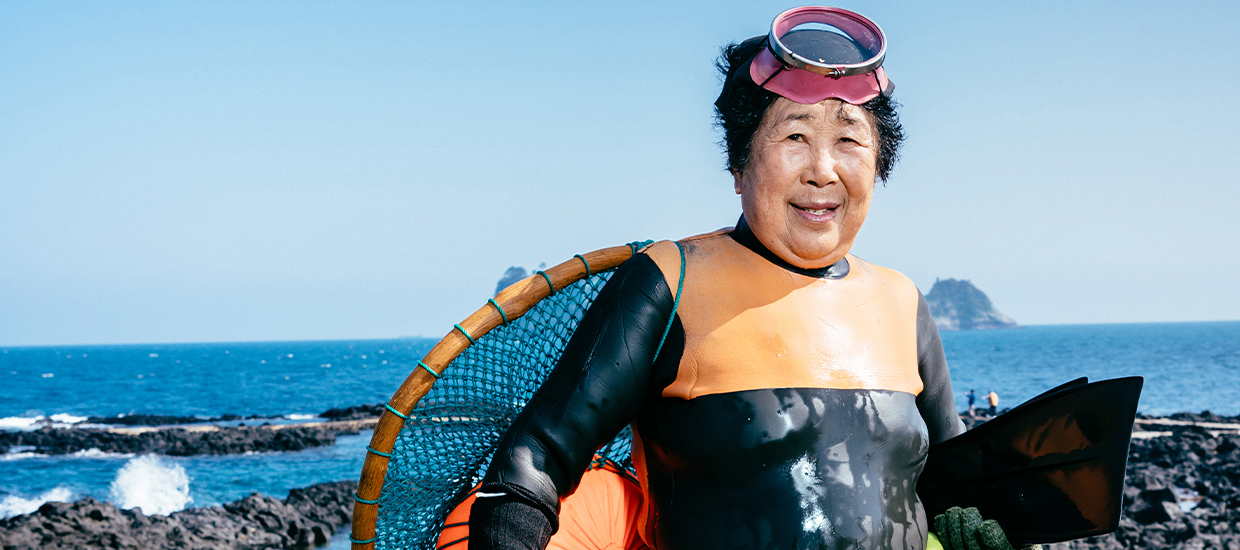PHOTOGRAPHY BY JUN MICHAEL PARK
Marado is a grass-covered teardrop of an island in the sea just off the Korean peninsula, where the mainland breaks into a confetti of volcanic rocks between China and Japan. Population? One hundred, give or take. But each day, the crowd swells with South Korean tourists coming to snap photos of the southernmost point in the country. The 75-acre islet, one of the 60-some windswept islands that make up Jeju Province, is an entirely different world from the neon-soaked technopolis of Seoul, 300 miles to the north. It’s the kind of place that makes city folks camera-crazy, and today the tourists are even more aggressive than usual, elbowing me out of the way to get a glimpse of the haenyeo, or sea women. In particular, they’re fixated on one trim figure zipping up her rubber diving suit and strapping on her goggles.
“She’s much prettier in person,” one middle-aged woman says in Korean. “I thought she just posed for the TV camera,” says another. “So she does actually dive!”
These amateur paparazzi are after Kim Jae-yeon, who made headlines 10 years ago, when, at age 32, she became the youngest of the haenyeo, Korea’s traditional female divers, who hold their breath for more than two minutes while combing the seabed for culinary treasures that end up in restaurants in Korea and Japan: kelp, sea cucumbers, conchs, a succulent seaweed called tot, and, most prized of all, abalone. Once ubiquitous in Korea’s southern islands, the sea women have seen their numbers dwindle down to a handful of old-timers; when Kim entered the profession, the next-youngest working haenyeo was in her 50s.
Satisfied with their photos, the tourists board the ferry for Jeju, the Maui-size main island about seven miles to the north. As the boat motors away, silence settles in. By now, Kim and four other haenyeo have kicked their flippers out a few hundred feet from the shore, where they bob between dilapidated fishing boats. I hear a high-pitched whistle, not unlike a dolphin’s cry, and then another—a chorus rising like a series of questions. This is sumbi, the sound that a haenyeo makes as she returns to the light, expelling the very last reserve of air from her lungs and preparing to fill them anew.
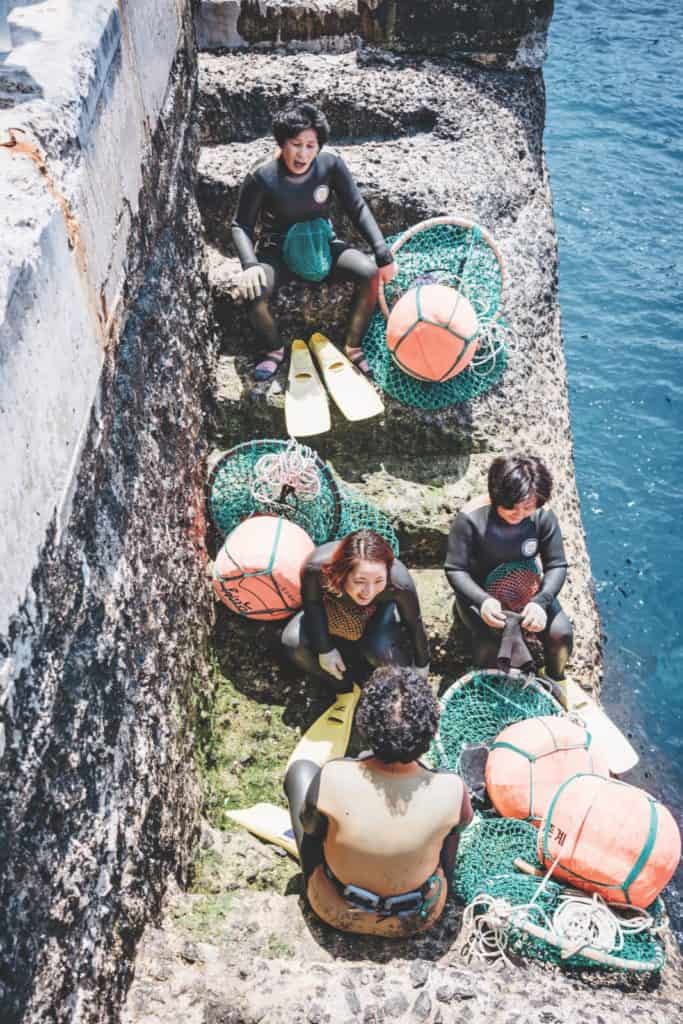
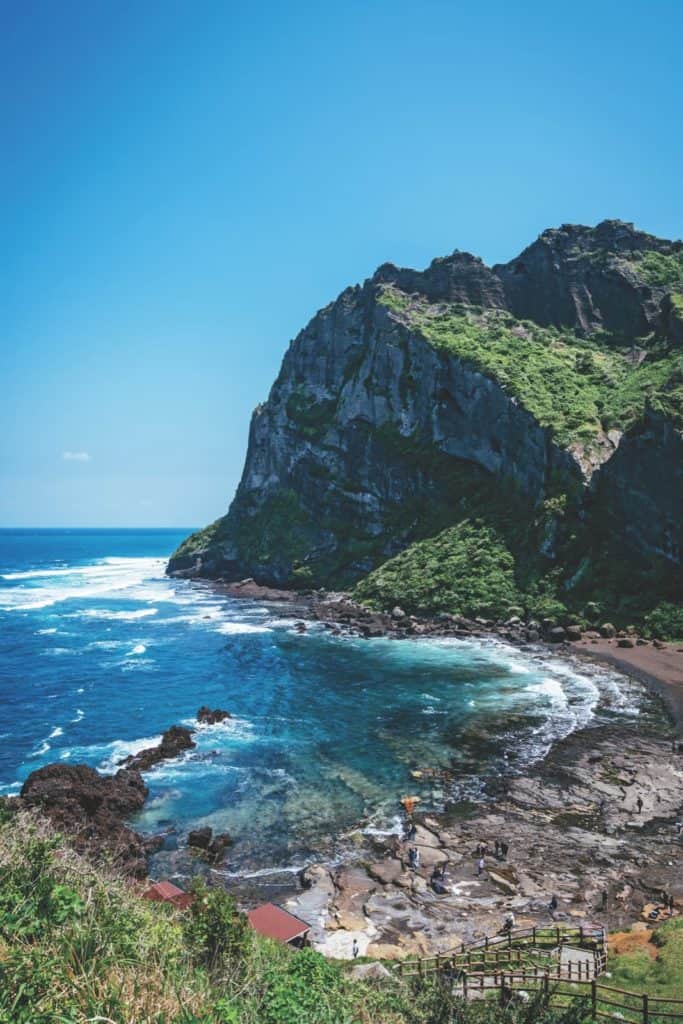
A few days later, when I meet Kim in the small village of Shinumri on Jeju, nobody is snapping her photo. Denim-clad, she blends in at a cavernous cement-and-timber coffee shop that wouldn’t look out of place in Brooklyn—which, naturally, is the café’s name. The heavy door swings open and slams, swings open again. The winds are famously fickle on Jeju, and today they are especially ferocious.
A mother of two, Kim splits her time between Jeju, where her husband works and looks after the kids, and Marado, where she was born. Because of the winds, ferries have been suspended for three days now, and she’s getting antsy. Haenyeo are territorial, working in turf-specific collectives—which means she can dive only on Marado. “When I can’t go in, I can’t stop imagining the water,” she says.
The sea—and the separation it provides from the mainland—defines Jeju Province, which was its own kingdom until the early 15th century and continues to march to its own beat. The island dialect is practically incomprehensible to most Koreans, and Jeju, known as “the Island of 18,000 Gods,” hangs on to its ancient religious traditions: Shamanistic shrines mark trees revered for their spirits, and stone statues stand guard over pastures. When canola blossoms flutter in spring, it can feel like the most gentle place on earth; then a gale-force wind will blow across the island—Mother Nature reminding us who’s in charge.
But more than anything else, what makes Jeju inimitable are its resilient sea women. In 2016, UNESCO designated the haenyeo an Intangible Cultural Heritage of Humanity. The earliest written records of free diving here date to 434 CE; the divers may have been men originally, but by the 18th century the discipline had become the domain of women alone. Some speculate that men became preoccupied with line-fishing and farming; others theorize that women could withstand the frigid water better. Men may also have had more opportunity on the mainland, where they could escape Jeju’s harsh work conditions.
Even today, diving is a difficult, dangerous profession, one that has drawn generations of women seeking not fame but survival. With the area’s burgeoning tourism industry offering better-paying, safer jobs on land, the haenyeo are on the wane. In 1965, there were more than 23,000—one in five women in Jeju—but today fewer than 4,000 dive for a living, nearly 90 percent of those over 60.
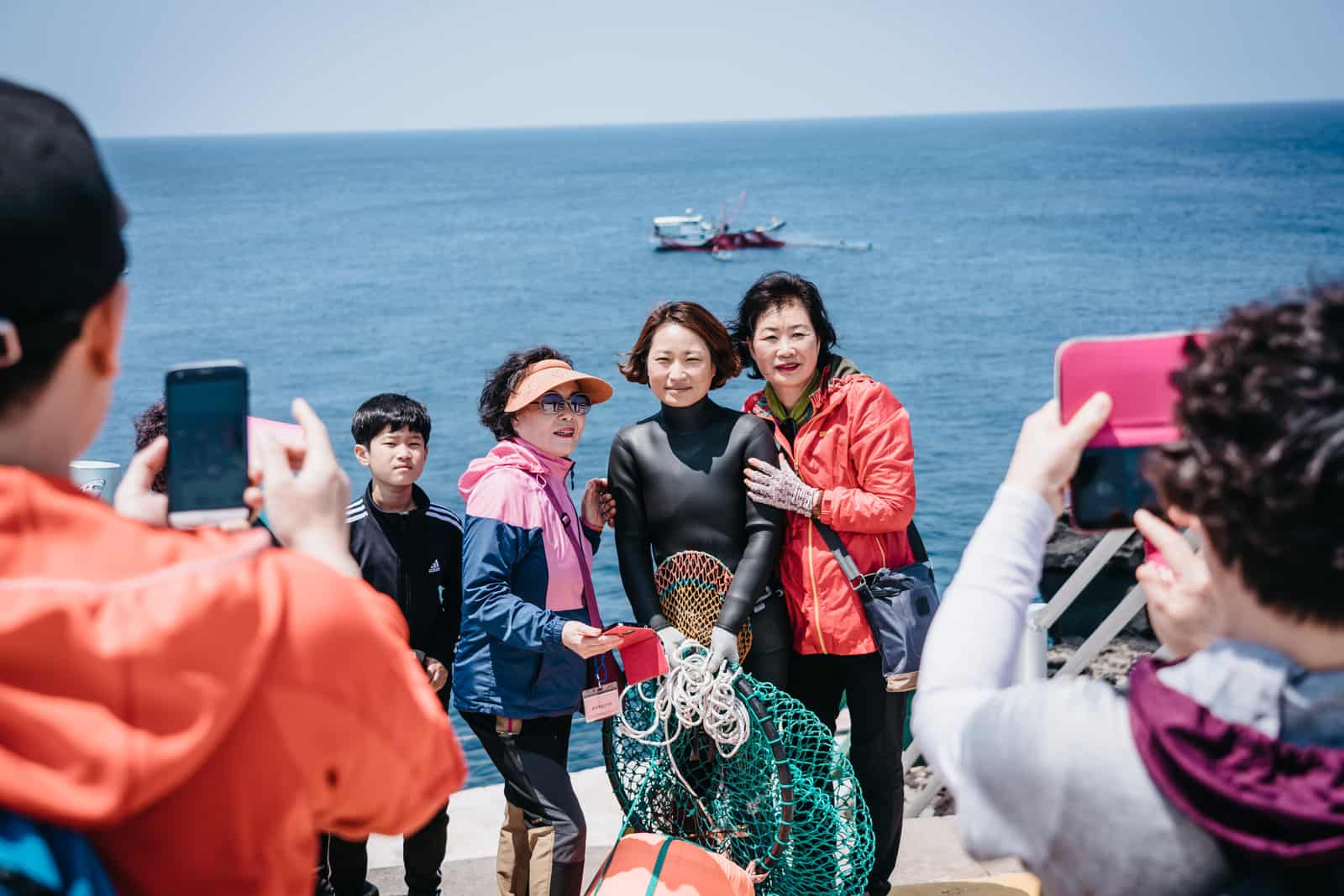
Kim had followed the sort of promising path that parents in remote places like Marado wish for their daughters: university, marriage, a job in finance. None of those things involved the perils of the sea. “But I was feeling sad,” she tells me in Korean. “I felt like I had nothing to live for. Or to lose.”
Seeing her struggle on land, her haenyeo aunt took her to the water as a last resort. “The moment you go underwater, you have one choice: swim or die,” Kim says. “It’s not at all like what you see in pretty photographs. When you’re down there, it can get pitch black—sometimes you don’t know what’s one meter ahead of you.”
On her first day, she managed three hours, about half the usual workday of a haenyeo. The currents seized her body. Her eyes failed her. She kicked and kicked. So weakened were her limbs that she could barely crawl out of the sea. But for the first time in years, she slept soundly through the night. The elderly divers of Marado could not comprehend why this young, educated woman would give up the comfort of the firm ground to become the sixth generation of her family to dive—but Kim never looked back.
Standing on an empty crescent of sand on the eastern tip of Jeju, a mile south of the 600-foot Seongsan Ilchulbong (Sunrise Peak), Jeong Gwang-ja looks wistfully toward the water. The 75-year-old diver shuffles across the beach with a slight limp, thanks to a recent ankle injury. Owing to tidal patterns, haenyeo work nine days in a row and take six off, but she’s been stuck on dry land of late. “If I don’t dive, I get sick,” she says.
Women in their 90s abandon their walkers and morph into mermaids.
One might wonder how such an apparently frail woman could still be diving—and yet visitors to Jeju see women well into their 80s and 90s abandon their walkers at the shore and seemingly morph into mermaids. It’s as if the very water that has battered and frozen them also sustains and replenishes them. Youth appears to offer little advantage; according to Jeong, haenyeo peak in their 50s, when they’ve accumulated enough experience to sense minute changes in the current. “You learn to be calm,” she says. In their prime, these women can haul twice their body weight in seaweed each day.
The winds whistle around us, and Jeong insists that I warm up in her house down the road. Over milky instant coffee, she points to pictures of her children on the wall, next to a plaque she received when she met the president of Korea. “How many people with four-year degrees get honored like this?” she asks. “I paid for this roof. I paid my children’s tuition. Of course I’m proud to be haenyeo.”
Not all of her friends share the sentiment. Being a free diver has long been a source of shame for many—an indication of poverty. There’s no question that the work is brutal. As the divers age, their hearing becomes diminished, their bones weakened by the pressure of the depths. Dangers lurk in every nook of the sea: feet tangled in seaweed, bodies thrust around by undercurrents, breath running out a few seconds too soon. Sharks. Every haenyeo can recite the names of friends and relatives lost to the sea. Shamans come to the shore once a year to pacify the sea, and they return each time a life is lost.
“How fortunate am I?” Jeong asks, her voice suddenly quiet. “Sometimes I think about my mother and I cry.” Until wet suits subsidized by the government arrived in the mid-1970s, the women wore cotton while braving the frigid waters, shivering around bonfires between dives. Even experienced divers could die of hypothermia. “She worked like that to put food on the table,” Jeong says. “I have it easy.”
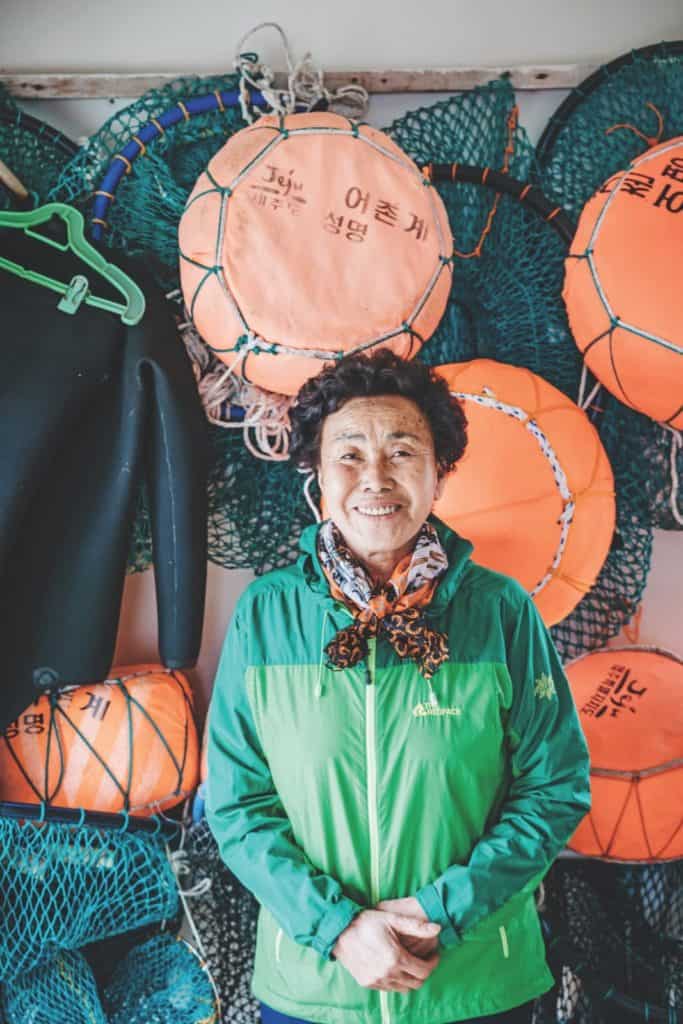
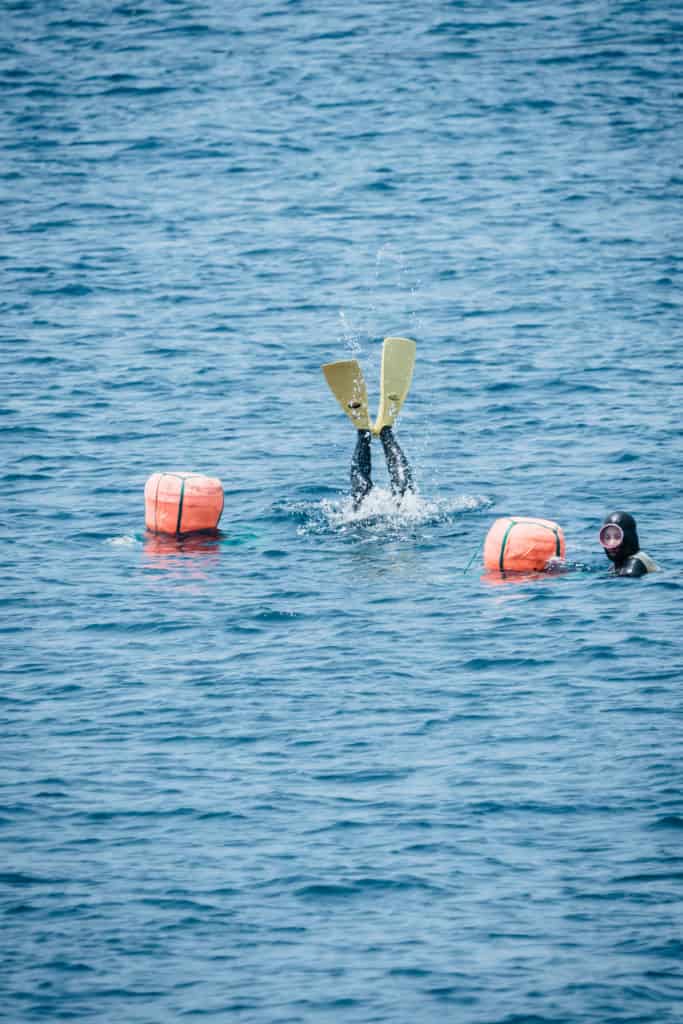
It’s not just this steely resolve that sets these women apart; it’s their very culture of sisterhood. Even after a shouting match, the women will help one another. If a diver drops an abalone—a single one of which can bring in half a day’s wage—whoever retrieves it will return it to her. Maybe it’s this spirit of cooperation that has kept the women going. When asked why free diving is a female domain, Jeong doesn’t hesitate to answer: “On Jeju, the women are tougher than men.”
I visited Jeju on a childhood family trip, in the early ’90s. I vaguely recall straw-roofed homes and roaming black pigs. As we drove along the sea, it felt as if we were at the edge of the world.
Today, though, I find a different place. In 1988, the year Seoul hosted the Summer Olympics, Jeju Island exceeded 2 million visitors for the first time; by 2018, that figure had ballooned to more than 14 million. In addition to tourism, this island of 690,000 residents has seen an influx of artists fleeing the hurried life of the capital—which explains all the starkly minimalist galleries and cafés that now line the seaside road.
Jeju is changing, but patches of the old landscape remain. Traditional walls made of porous volcanic rock still withstand horizontal rain and wind, protecting homes. On quieter stretches of the coast road, weather-beaten signs in Korean announce “haenyeo restaurant.”
On the northeastern corner of the island, I stop at one of these, a spartan affair with a plastic tablecloth and large fish tanks. “Auntie,” I ask the matron, “why is this place a haenyeo restaurant?”
“Because it’s owned by someone who used to dive,” she says.
And who would that be?
“Me,” she answers curtly.
She takes my order and returns with three freshly shucked abalone, still undulating on their shells. This isn’t for the easily spooked. Then again, neither is holding your breath and diving toward the seabed in search of these creatures.
Later, seeing me struggle with a fiery seafood stew, the impatient matron shuffles over and begins peeling shrimp with her bare hands, practically force-feeding me. I ask her what life was like as a haenyeo. She tuts and walks away. Then, thinking better of it, she adds: “I was top grade.”
Haenyeo divide themselves into three grades: Top, middle, and low. Low-grade divers tend to stick to the shallowest waters, but the highest earners brave depths beyond 50 feet. At age 79, Jeong Ok-seon can still pull that off. In addition to diving, she teaches at Beophwan Jomnyeo Village Haenyo School, which lets laywomen—and men—try the trade.
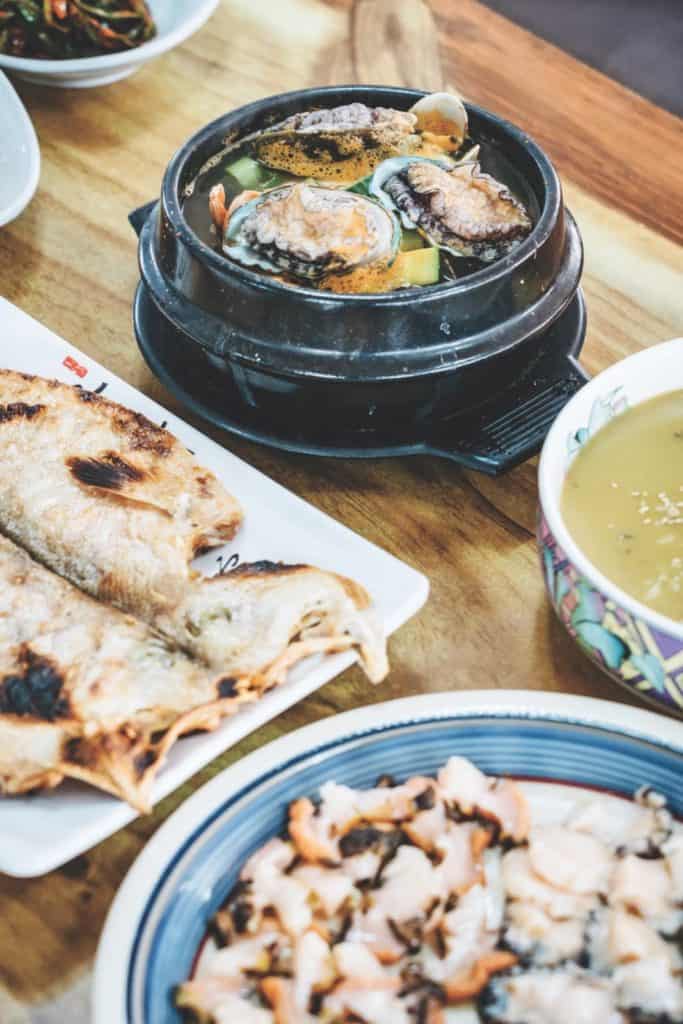
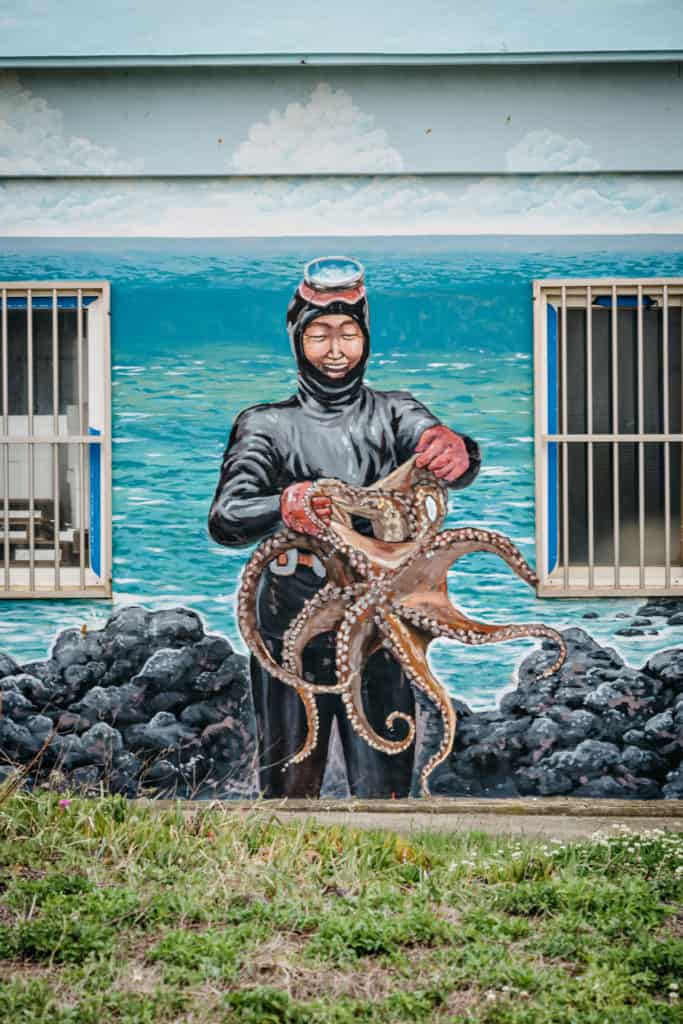
“Most students are honeymooners who want to do it for fun for a day,” Jeong says as we walk in our wet suits, down a rocky path toward a small cove. “But we do have three young kids who are serious.” By kids she means women in their 30s. She hopes they will keep her local co-op going.
In neck-deep water, she scatters a few conchs for me to practice retrieving. All that involves is putting on goggles and bending down, but she humors me with words of congratulation. Then we move to deeper water.
How hard could it be to sink to the bottom of the sea to pick up a few shells? Much tougher than I ever thought. My body fights my brain, which is trying to return to the surface. The weight belts do little to help, and as my face bulges like a blowfish to hoard the little air I have left, every corner of my torso shakes in protest. Yet I can also see how tempting it is to stay underwater beyond your abilities. When your hands are mere inches away from those shells, greed can be your undoing. These epiphanies all come at around 12 feet below the surface—just about twice my height. I wouldn’t even make low grade.
When I come up empty-handed, Jeong shows me how it’s really done. She descends headfirst, nearly in a straight line, then feels her way around the bottom with her hands and a pick. Far above her, I can’t even hold my breath long enough to watch her entire dive. I have to take two more gulps of air before she rises, her hands full of spindly, iridescent shells that will soon end up in someone’s stew.
We’ve been in the water for less than an hour, but I’m ready to call it quits. “Are you sure you want to leave?” she asks. She’s grinning from ear to ear, having just spotted an abalone. Teeth chattering, I nod.
As we walk away from the shore, I hear the unmistakable sound again: sumbi. I stand, frozen. Once you’ve heard the whistling sound the haenyeo make, you begin noticing it all around Jeju. Only, you’re never sure if it’s not just in your head. But the women know. This is no siren song for wayward sailors or fishermen or tourists. This signal is both a sigh of relief and a call to start again. It’s the women’s way of telling one another that, against all odds, they’re still here.
THE ESSENTIALS
EAT
Restaurants run by current or former divers, marked with signs that read , include Jeju’s Jongdal Haenyeo House (Gujwa-eup, Jongdal-ri, 478-14). Tired of seafood? Try Neulbom in Nohyeong-dong for Jeju-style black pork (jejuneulbom.co.kr).
GO
United offers daily flights from San Francisco to Seoul’s Incheon Airport. To reach Jeju, fly from Seoul with United codeshare partner Asiana (with 178 flights daily, it’s the world’s busiest air route) or take a 12-hour ferry from Busan.
STAY
Shilla Stay Jeju, in the heart of the province’s largest town, Jeju City, is a convenient home base for exploring the island without giving up urban comforts like shopping and street food. From $91, shillastay.com
DIVE
While instructors speak only Korean, visitors can still practice with experienced divers at Beophwan Jomnyeo Village Haenyeo School. Two-hour lesson including equipment rental for around $26; thehaenyeo-school.com
